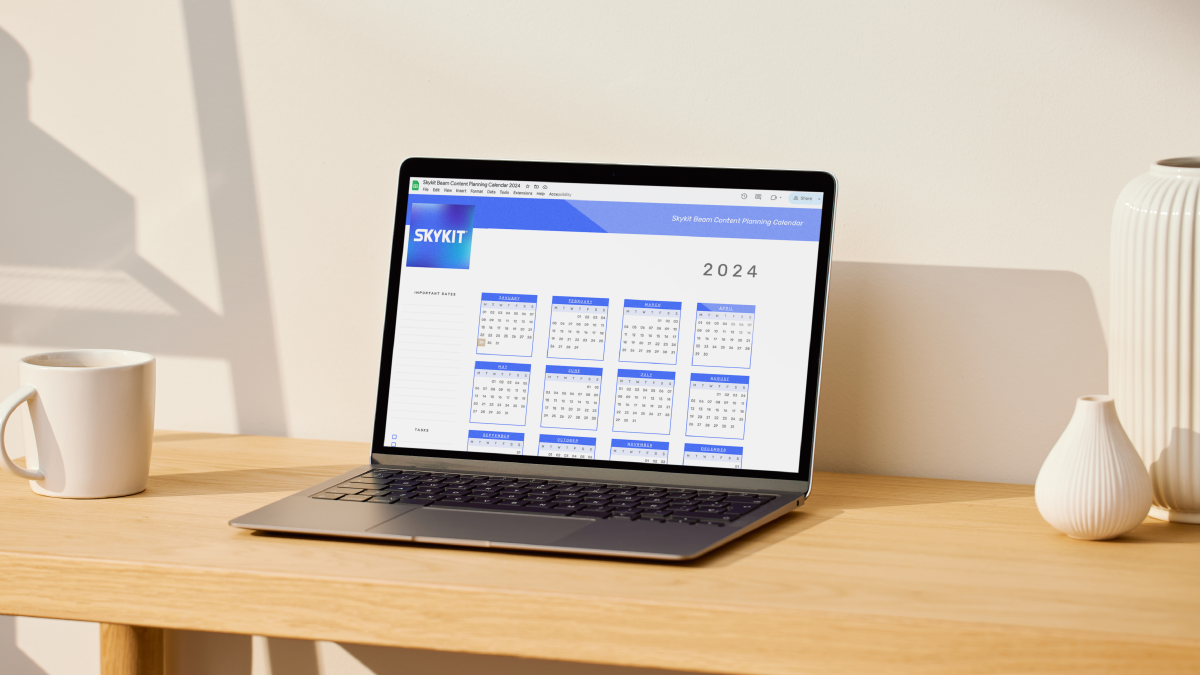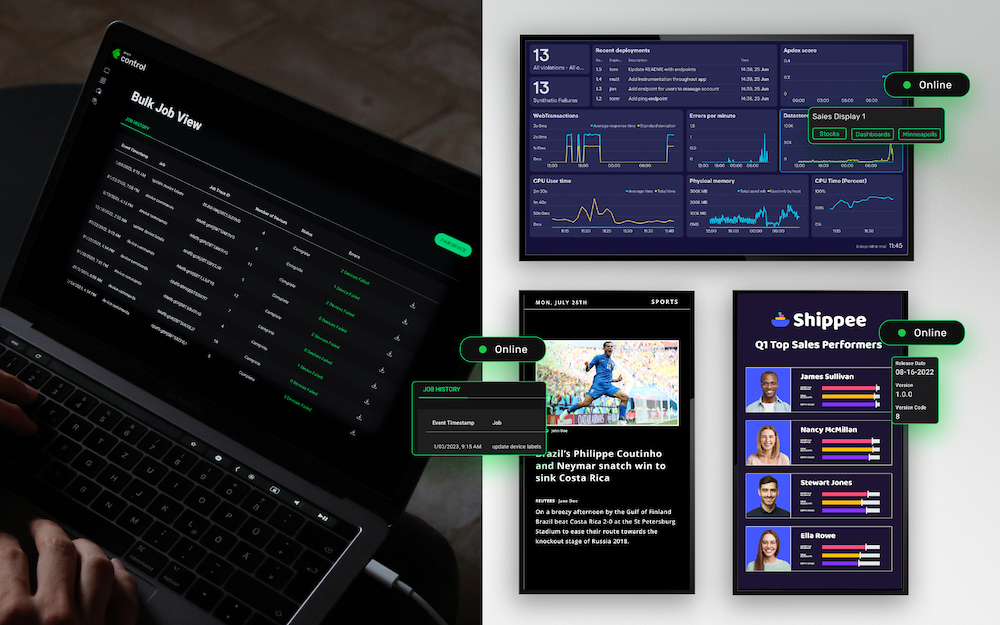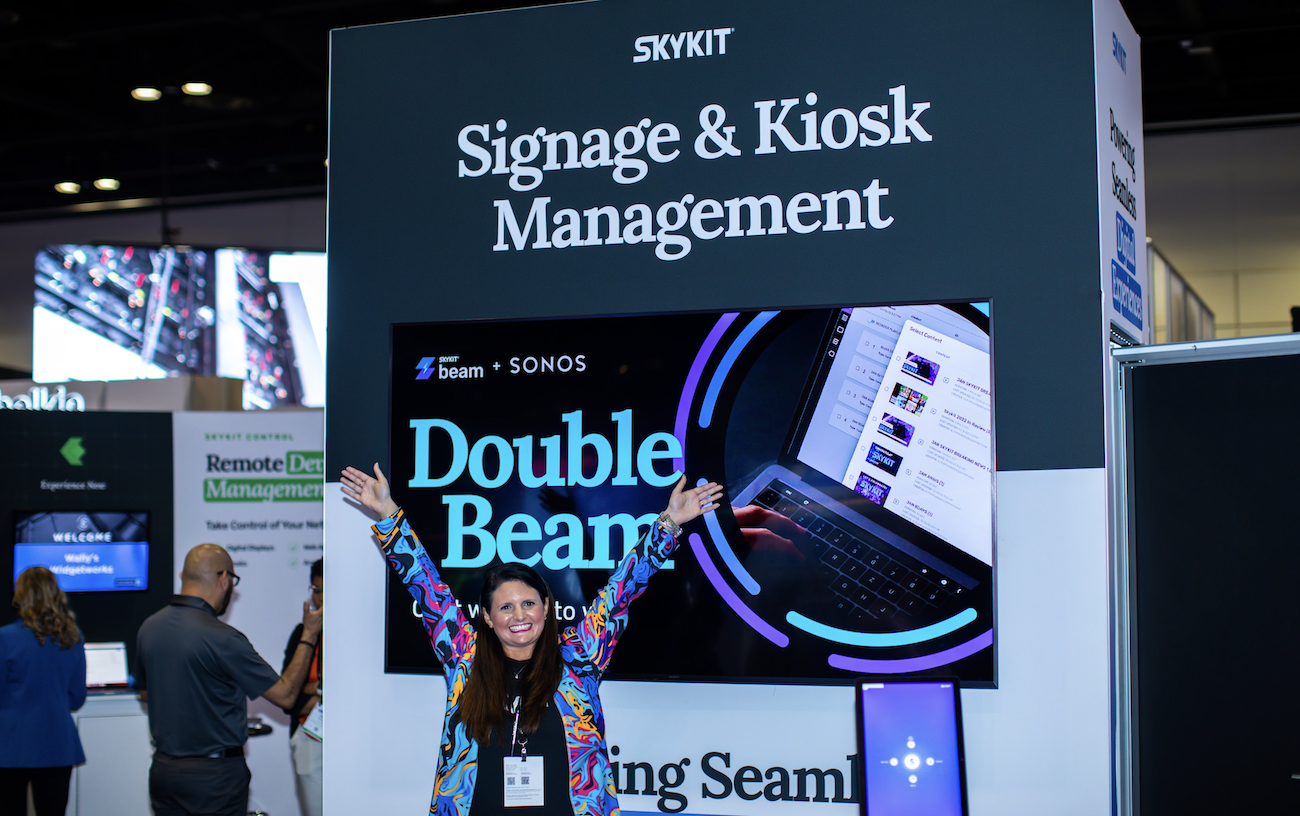If you have a digital display in your retail store and recognize that it’s not moving your customers to buy or increasing your bottom line, you may have a problem.
If the content you display on your sign doesn’t attract or engage visitors, you may also have a problem.
Finally, if you feel like you’ve invested in an in-store customer engagement strategy that isn’t living up to your expectations and you think you’ve invested poorly, you can add that to the list of above problems.
Lucky for you, where there is a problem, there is always a solution.
There are best practices, tips, and tricks you can begin implementing to turn your digital problems into money-making solutions.
Do you want to know what they are?
Of course you do. That’s why we’ve compiled a list for you. Here are four best practices, tips, and tricks to develop a strong retail digital signage strategy.
1) Develop a Strategy
Yes, I know, that’s the title of the blog. But if you don’t actually develop a viable strategy, you won’t see viable results.
Depending on what you want to accomplish, you need to consider what kind of commercial digital screen to use, where that screen should be located, and how often you should change the content.
To accomplish this, ask yourself the following:
– What is your primary objective?
What is your goal? Is it to move inventory? Promote a new line of merchandise or clothing? Highlight a special promotion? Zero in on what the goal is to determine what your message will be.
– Who are you selling to with this strategy?
You may sell clothes to women of all ages. But your campaign may be for juniors this time around. That means you’ve got to gear your content primarily toward young people. Decide exactly who you are selling to so you can create relatable content.
– When do you need to launch your campaign?
Does your campaign revolve around a specific trend, holiday, or event? Determining a launch date can offer you a timeline with which to work within.
– What kind of impact are you making?
This can be determined by measuring the tangible and intangible effects of your products action or influence on a customer. In other words, determining how the customer will respond to your promotion and what actions they’ll take after their response.
– Where should your sign be located?
Finally, where do you need to put your commercial grade screen for juniors to see? Where do they spend their time in the store? If you have two signs, one at the entrance and again in the junior’s section would be ideal. Putting it outside of the area of sale would be counterintuitive to what you are trying to accomplish.
2) Build a Team
A colleague of mine told me a story once where the president of an organization he belonged to was responsible for the passwords for their .org website. The president established the domain and the host, making himself the primary contact for when the domain expired.
The rest of the organization assumed he would take care of all aspects of the website because he took the reigns on establishing the domain.
And then the president moved.
The day came for the domain name to expire and the organization, not being aware of this, lost the domain name for their site.
If they had a team and a system in place, that loss wouldn’t have happened.
Having a group of people working together doesn’t equate to a team unless there are communication and role designations. Decide who is going to build the content for your campaign. Allow yourself to have a secondary person oversee content creation.
There are other roles as well.
What is the role of the store manager?
The content manager?
Who will decide when the campaign begins and ends?
Who will track and measure impact?
Be clear and concise in each and every role and what the actions are for each person. Without clarity, a campaign can fall flat.
3) Track Marketing Trends
What worked in your marketing yesterday might not fly today. That’s just the nature of the beast. Trends that are outdated could be one of the reasons you’re campaign is in low gear.
Here are a few digital signage trends that are working in 2016 that you should consider:
– Interactive Campaigns
Getting your customers involved in your digital campaign is hot. All the cool kids are doing it, including the popular energy drink, Red Bull.
In a standout campaign delivered by Red Bull in Vienna, shoppers that may have never experienced “getting their wings” were given the opportunity to a digital sign armed with motion tracking and gesture recognition technology.
By using their bodies to virtually move a can of Red Bull into a particular space on the screen, consumers were not only able to interact physically with the campaign, but were also able to attract the attention of people passing by.
Smart.
– Social Media Feeds
Let’s stick with Red Bull for this one. The energy drink uses all sorts of channels to promote their message. Their favorite medium is video. Between Facebook and Twitter, they’ve got social media interaction down.
But what really makes them show up is when they incorporate one of these social feeds in a digital signage campaign.
By allowing interactive customers to post selfies of themselves or others playing with the motion tracking, Red Bull wins. Who doesn’t want to see the very thing they posted show up on a large screen in front of a zillion people?
By incorporating a live social media feed, you are showing your customers that you care about what they say and how they feel about your product.
– Omnichannel Experiences
Omnichannel is a retail business model that uses a variety of sales strategies across multiple channels to enhance the customer shopping experience, no matter their location.
A brick-and-mortar store is almost always part of that experience. And now, more than ever, digital signage installed in store locations can bring the omnichannel buying experience to a higher level for both consumers and retailers.
Here’s an example:
Best Buy used an omnichannel approach when they faced bankruptcy in 2012, thanks to a surge in online purchases. No one was playing nice in their actual brick and mortar stores.
The big box retailer fought the potential bankruptcy by offering ‘special’ alerts on consumer’s smartphones and pick-up options in-store for those that originally bought online
They installed kiosks in various stores, too.
In a 2015 report, Best Buy indicated that up to 4% of their online traffic resulted in dead-end sales because they didn’t have the inventory in their distribution centers. It sat, available, in their stores 80% of the time.
By offering an omnichannel solution that offered ship-to options from other stores, their sales increased significantly.
Again, smart.
4) LED Displays
LED screens are becoming the preferred norm in digital signage.
Where they were primarily used outdoors at large sporting events or other venues, the screens are now popping up indoors because of their versatility.
LED displays are more affordable, too. And more colorful, providing better imagery for viewers both indoors and outdoors.
Users also like LED if their screens need to be in an area where lighting is a factor. For example, the sun may play a role in how well an image shows up or washes out. LED is so advanced now, that screens can be expertly placed in “bright” areas, and still show a brilliant picture.
The size and shape of your screen are important to consider when deciding if it makes sense to go with an LED screen. If you like a rounded sign or a tall pillar sign, LED is the very best option.
If you have screens that need to be up and running on a moments notice, LED signs light up very quickly. They are ideal for use in applications that are subject to frequent on/off cycling.
That’s not to say the LCD screens aren’t our friends, they are. But we’re talking best practices here, right? LED is what’s working in 2016.
Conclusion
Staying present with best practices can be the difference between a successful campaign and a not-so-successful campaign.
Start with developing a solid strategy. Often this requires looking at trends within your business that are most effective. When were sales the strongest? What sold the most? How can you replicate that buying power?
Determine your objective.
By doing this, creating relatable content is a breeze.
Create the content with a team that has designated parts to play. Sometimes marketing campaigns grow bigger than we anticipated they would. Tracking sales and what works makes for a profitable campaign that is well managed.
Consider what marketing trends work best for your business. If you don’t yet have a strong presence on social media, incorporating a live social feed won’t serve you. But an interactive campaign might.
Build your social presence by starting with an interactive campaign to give your customers something to talk about and share. Then your social presence can grow from there.
Finally, don’t do anything you’re not comfortable with. Posts like this can give you tips all day long, but if there is something you don’t feel fits you or your brand, stand back and reassess.
Do your homework.
Dig into and study campaigns you like.
Ask questions.
And after you asked your questions, ask some more.
That is, by far, the greatest tip we can offer.
What tips do you follow when it comes to what’s working in digital signage?



